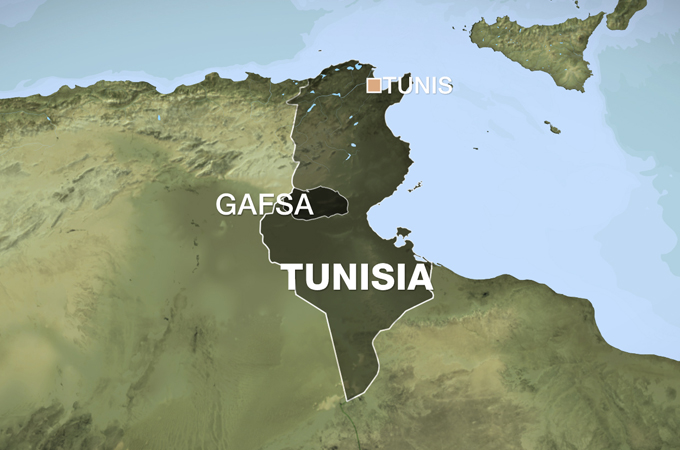
Phosphate fantasies
The damaging health effects of Tunisia’s phosphate mines on workers who hoped the Arab Spring would bring change.
Four years on from the uprising that gave birth to the Arab Spring, Tunisia has a new president. The election of Beji Caid Essebsi in a free poll at the end of 2014 has raised hopes that the country’s progress to political and economic stability and security will continue. But the new government faces many challenges: high unemployment, a history of chronic underinvestment in infrastructure and public services, and glaring economic disparity between Tunisia’s coastal areas and its deprived interior, to name but a few.
The country’s phosphate mining areas – predominantly in the south western region of Gafsa – are emblematic of many of these problems. Phosphate is a globally valuable commodity, necessary for the manufacture of everything from fertilisers and detergent to wine and cosmetics. It has long been one of Tunisia’s principle sources of export earnings, but the mining communities that deliver it have long-standing social and economic grievances which they are not shy about raising.
Keep reading
list of 4 itemsUK set to ban tobacco sales for a ‘smoke-free’ generation. Will it work?
Poland lawmakers take steps towards liberalising abortion laws
First pig kidney in a human: Is this the future of transplants?
Indeed, talk to anyone in Gafsa and you will hear that this is where the Arab Spring actually began – not in 2011, but in 2008 when a protest movement over working conditions, low wages and unemployment erupted into a confrontation with the autocratic regime of then-President Zine El Abidine Ben Ali, which – though savagely repressed at the time – planted the seeds of a national political movement that eventually saw the dictator overthrown.
Unfortunately for the people of Gafsa, few of their problems have gone away.
The outgoing transitional administration of President Moncef Marzouki, which took office after the revolution with the support of Tunisia’s main Islamist party Ennahda, promised much but delivered little in the way of economic progress or reform: CPG [Compagnie des phosphates de Gafsa], the state-owned company that produces most of the country’s phosphate, still makes big (though declining) profits, but has signally failed to invest in much-needed new equipment or infrastructure; unemployment in mining towns such as Metlaoui still stands at around 30 percent; and phosphate industry pollution – which for years has had a frightful effect on the health of local people – shows no sign of improving.
In the meantime, food prices are still high, earnings, for those lucky enough to have a job, are low and industrial unrest in the form of occasional strikes and protests continues.

It remains to be seen whether the new government will find remedies to these problems. As a veteran secular politician who served in the governments of both of Tunisia’s former dictators, President Essebsi won the support of the country’s wealthier coastal area but is distrusted in other, poorer parts of the country and will have a hard time winning them over if the economy does not improve.
Yet if he does not, if his administration fails to take the frustration in places like Gafsa seriously and concentrates on Tunisia’s many other problems – crime, corruption and the threat of terrorism are all pressing concerns – then it may rebound on him badly.
As this film, by French director Eric de Lavarene, makes clear, the phosphate industry may be vital to Tunisia’s economic prospects, but the people who produce it – often under very difficult and dangerous conditions – are fed up with being taken for granted. And they have a history of making their unhappiness felt.